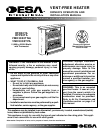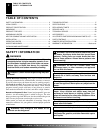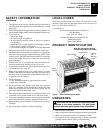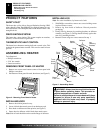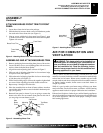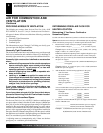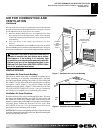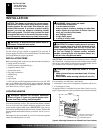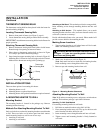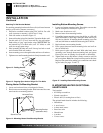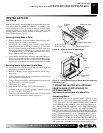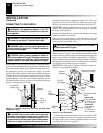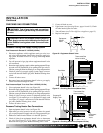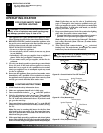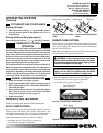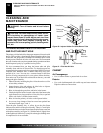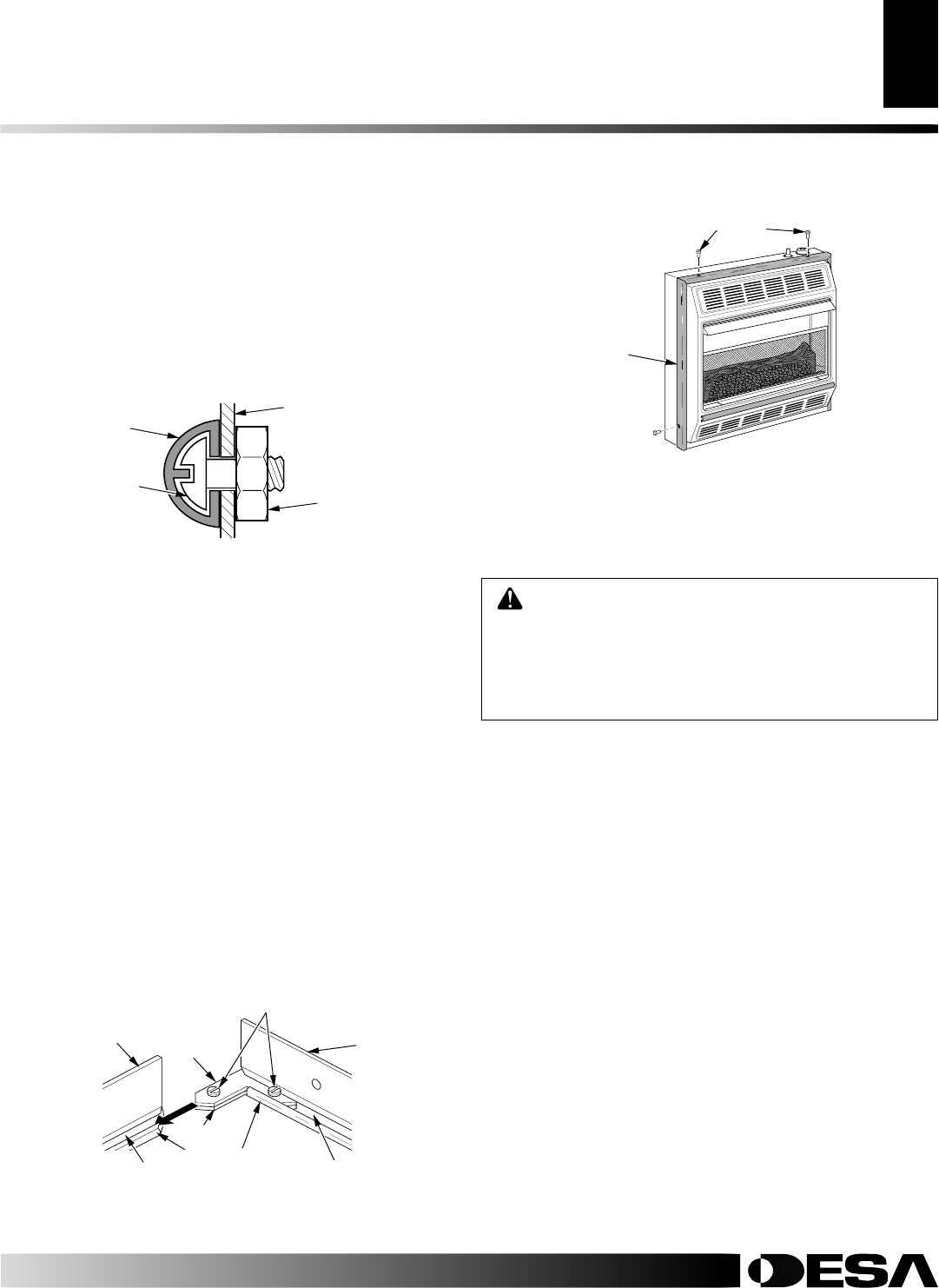
109889
For more information, visit www.desatech.com
For more information, visit www.desatech.com
5
5
ATTACHING BRASS FRONT TRIM TO FRONT
PANEL
1. Locate brass front trim in brass trim package.
2. Slide the head of two truss-head screws from hardware packet
into each end of brass front trim (see Figure 4).
3. Line up screws with holes in front panel (see Figure 3, page
4). Insert screws in holes. Attach nuts from inside of front panel.
Tighten with wrench.
Figure 4 - Attaching Brass Front Trim to Front Panel
Truss-Head
Screw
Nut
Front Panel
Brass Front Trim
ASSEMBLY
Continued
ASSEMBLING AND ATTACHING BRASS TRIM
1. Remove packaging from remaining three pieces of brass trim.
2. Locate four brass screws, two adjusting plates with set screws,
and two shims in the hardware packet.
3. Align shim under adjusting plate as shown in Figure 5.
4. Slide one end of adjusting plate/shim in slot on mitered edge
of top brass trim (see Figure 5).
5. Slide other end of adjusting plate/shim in slot on mitered edge
of side brass trim (see Figure 5).
6. While firmly holding edges of brass trim together, tighten both
set screws on the adjusting plate with slotted screwdriver.
7. Repeat steps 1 through 6 for other side.
8. Place the assembled trim on front of heater cabinet. Attach on
top and sides with four brass screws included in hardware pack-
age (see Figure 6).
9. Reattach front panel to heater if you are going to mount the
heater to the base. Do not reattach front panel at this time if
you are going to mount heater to wall.
Side
Brass
Trim
Top Brass
Trim
Slot
Mitered Edge
Slot
Set Screws
Adjusting
Plate
Screws
Assembled
Brass Trim
Figure 6 - Attaching Brass Trim to Heater
Figure 5 - Assembling Brass Trim
Shim
ASSEMBLING HEATER
Attaching Brass Font Trim To Front Panel
Assembling And Attaching Brass Trim
AIR FOR COMBUSTION AND VENTILATION
AIR FOR COMBUSTION AND
VENTILATION
Today’s homes are built more energy efficient than ever. New
materials, increased insulation, and new construction methods help
reduce heat loss in homes. Home owners weather strip and caulk
around windows and doors to keep the cold air out and the warm air
in. During heating months, home owners want their homes as
airtight as possible.
While it is good to make your home energy efficient, your home
needs to breathe. Fresh air must enter your home. All fuel-burning
appliances need fresh air for proper combustion and ventilation.
Exhaust fans, fireplaces, clothes dryers, and fuel burning appliances
draw air from the house to operate. You must provide adequate fresh
air for these appliances. This will insure proper venting of vented
fuel-burning appliances.
WARNING: This heater shall not be installed in a
confined space or unusually tight construction un-
less provisions are provided for adequate combus-
tion and ventilation air. Read the following instruc-
tions to insure proper fresh air for this and other fuel-
burning appliances in your home.



